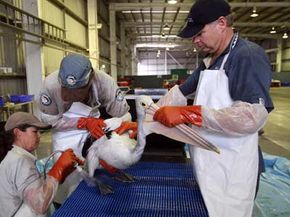Want to save the planet? You're not alone. There's an almost endless list of organizations dedicated to making the world a greener place. Finding some (or several) to support just depends on which areas you are most interested in channeling your passions.
Most developed countries have government agencies devoted to protecting the environment. In the U.S., the most well known are the Environmental Protection Agency, which sets standards and enforces regulations on things like air quality, water contamination and ground pollution; and the U.S. Fish & Wildlife Service, which protects endangered species, enforces hunting rules and conserves wildlife habitats like wetlands [sources: EPA, U.S. Fish & Wildlife Service].
Advertisement
Beyond the government, there are hundreds of organizations devoted to specific environmental causes like air quality, climate change, forest preservation, habitat conservation, wildlife protection, population control, sustainable business, waste management, ground pollution and clean water [source: Envirolink].
Some of the best-known environmental organizations include:
- Sierra Club -- founded in 1892, fights for preservation of land and forest as well as clean air and water
- The National Audubon Society -- strives to preserve natural habitats for birds
- Greenpeace -- protests whaling, nuclear testing and fishing and mining in Antarctica
- Rainforest Action Network -- runs marketing campaigns to convince multinational corporations to stop business practices that lead to logging of ancient forests and destruction of other ecosystems [source: WebEcoist].
If you're interested in local causes, most cities also have their own environmental organizations such as Friends of the Chicago River, New Yorkers for Parks and Los Angeles County Bicycle Association.
Read on to find out which environmental organizations focus on education.
Advertisement


